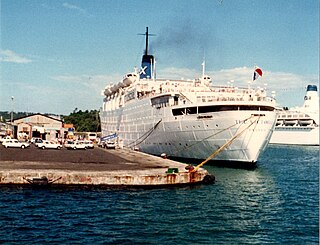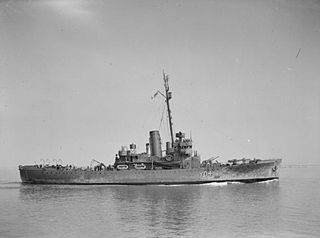Background
The Battle of the Atlantic was fought around merchant ships carrying supplies to and from the British Isles. While HX convoys, ON convoys, SC convoys, and CU convoys sailed to or from North America, Gibraltar convoys carried supplies on the traditional trade route with the remainder of the British Empire through the Mediterranean Sea, Suez Canal, Red Sea, and Indian Ocean. Proximity to Francoist Spain and Fascist Italy made this traditional trade route vulnerable to hostile observation and interception. Protection of this shipping route was similarly important to France for trade with colonial North Africa, Syria, Lebanon, Madagascar, and Indochina. Gibraltar convoys were escorted by French warships until the surrender of France. [1] Most shipping to and from the Indian Ocean and the eastern Mediterranean was diverted around Africa until the surrender of Italy. OG and KM convoys consisted largely of supplies for the military garrisons and civilian populations of Gibraltar and Malta, and for Operations Torch and Husky. The proximity of this convoy route to U-boat bases in occupied France caused frequent overlap of convoy battles with Allied offensive patrols in the Bay of Biscay. Air cover was flown from Cornwall and Gibraltar when conditions allowed, but an "air gap" remained where U-boats and surface raiders could patrol the convoy routes unobserved [2] until air patrols began flying from the Azores in October 1943. [3]

HMS Egret was a sloop of the British Royal Navy, the lead ship of her class. She was built by J. Samuel White at Cowes, Isle of Wight, was launched on 31 May 1938, and entered service on 11 November that year. Egret served as a convoy escort with the Western Approaches Command from 1940 until her loss in August 1943: She was on anti-submarine patrol in the Bay of Biscay when she was sunk by a guided missile in combat, the first ship to be lost in this manner.

HMS Activity was an escort carrier that served with the Royal Navy of the United Kingdom during the Second World War. After the war, she was sold into merchant service as the MV Breconshire, serving for over 20 years until scrapped in 1967.

MS Dunnottar Castle was a British-built passenger ship with a career of more than six decades that included periods as an ocean liner, an armed merchant cruiser (AMC), a troop ship and several decades as a cruise ship. As a cruise ship she was renamed Victoria, then The Victoria and finally Princesa Victoria.

The Mediterranean U-boat Campaign lasted from about 21 September 1941 to 19 September 1944 during the Second World War. Malta was an active British base strategically located near supply routes from Europe to North Africa. Axis supply convoys across the Mediterranean Sea suffered severe losses, which in turn threatened the fighting ability of the Axis armies in North Africa. The Allies were able to keep their North African armies supplied. The Kriegsmarine tried to isolate Malta but later it concentrated its U-boat operations on disrupting Allied landing operations in southern Europe.
HMS Marigold was a Flower-class corvette of the Royal Navy. She was launched on 4 September 1940 and was sunk by an Italian air-dropped torpedo on 9 December 1942.

The Banff-class sloop was a group of ten warships of the Royal Navy. Built as United States Coast Guard Lake-class cutters, in 1941 these ships were loaned to the Royal Navy as antisubmarine warfare escort ships. The transfers took place at the Brooklyn Navy Yard; the sloops were manned for transport to Britain by personnel from the damaged battleship Malaya which was under repair there.

HG 76 was an Allied convoy of the HG series, during the Second World War. It was notable for the destruction of five German U-boats.

SS Hilary was a British steam passenger liner that was built in 1931 and scrapped in 1959. She spent much of her career on a scheduled service between Liverpool in England and Manaus in Brazil.
Convoys SL 138/MKS 28 were two Allied convoys which ran during the Battle of the Atlantic in World War II. SL 138 was one of the SL convoys from the South Atlantic to Britain, and MKS 28 one of the MKS convoys between Britain and the Mediterranean. They were sailing together on the Gibraltar homeward route, having made a rendezvous off Gibraltar in order to cross the Bay of Biscay with the maximum possible escort. They were the subject of a major U-boat attack in October 1943, the first battle in the Kriegsmarine's renewed Autumn offensive.
Convoys SL 139/MKS 30 were two Allied convoys which ran during the Battle of the Atlantic in World War II. SL 139 was one of the SL convoys from the South Atlantic to Britain, and MKS 30 one of the MKS convoys between Britain and the Mediterranean. They were sailing together on the Gibraltar homeward route, having made a rendezvous off Gibraltar in November 1943. They were the subject of a major U-boat attack, as part of the Kriegsmarine's renewed Autumn offensive.
Convoys SL 140/MKS 31 was a combined Allied convoy which ran during the Battle of the Atlantic in World War II, sailing to Britain in November 1943. SL convoys originated in Freetown, Sierra Leone, with their destination Liverpool and other ports in Britain. This was the 140th convoy to make that trip in WWII. SL 140 was composed of merchant ships bringing raw materials to the UK from various parts of the world. MKS was the designation for convoys from the Mediterranean to Britain. MK indicated ‘Mediterranean to the UK'. More than 100 MK convoys operated during the war. The S in this acronym specified ‘slow.’ This was a slow convoy, since it included thirteen LSTs, which had a top speed of about 10 knots. The LSTs and the additional landing craft they carried would be vital for the upcoming invasion of northern France.
Borkum was a wolf pack of German U-boats that operated during the battle of the Atlantic in World War II.

HMS Vetch (K132) was a Flower-class corvette that served in the Royal Navy during the Second World War. After helping to escort many convoys and sinking two U-boats, she was decommissioned and sold in 1945.

HMS Stork (L81) was a Bittern-class sloop of the Royal Navy. She was active during the Second World War, serving in convoy escort groups, and was a successful anti-submarine warfare vessel, being credited with the destruction of four U-boats.
SS Yoma was a British passenger liner that served as a troop ship in the Second World War. She was built in Scotland in 1928, and from then until 1940 Yoma ran a regular route between Glasgow in Scotland and Rangoon in Burma via Liverpool, Palma, Marseille and Egypt. She became a troop ship in 1941 and was sunk with great loss of life in the Mediterranean in 1943.
Convoy HG 73 was a trade convoy of merchant ships during the Second World War. It was the 73rd of the numbered HG convoys Homeward bound to the British Isles from Gibraltar. The convoy departed Gibraltar on 17 September 1941 and was found on 18 September and was attacked over the next ten days. Nine ships were sunk from the convoy before the submarines exhausted their torpedo inventory on 28 September. Surviving ships reached Liverpool on 1 October.
Convoy HG 53 was the 53rd of the numbered series of World War II HG convoys of Homeward bound merchant ships from Gibraltar to Liverpool. Convoy HG 53 lost nine ships during a coordinated attack in February 1941. HG 53 was one of the few Atlantic convoys to have ships sunk by submarines, by aircraft, and by surface ships.

SL convoys were a numbered series of North Atlantic trade convoys during the Second World War. Merchant ships carrying commodities bound to the British Isles from South America, Africa, and the Indian Ocean traveled independently to Freetown, Sierra Leone to be convoyed for the last leg of their voyage to Liverpool.

HMS Alisma was a Flower-class corvette that served in the Royal Navy.

HMS Dart (K21) was a River-class frigate of the Royal Navy. Dart was built to the RN's specifications as a Group I River-class frigate.
















